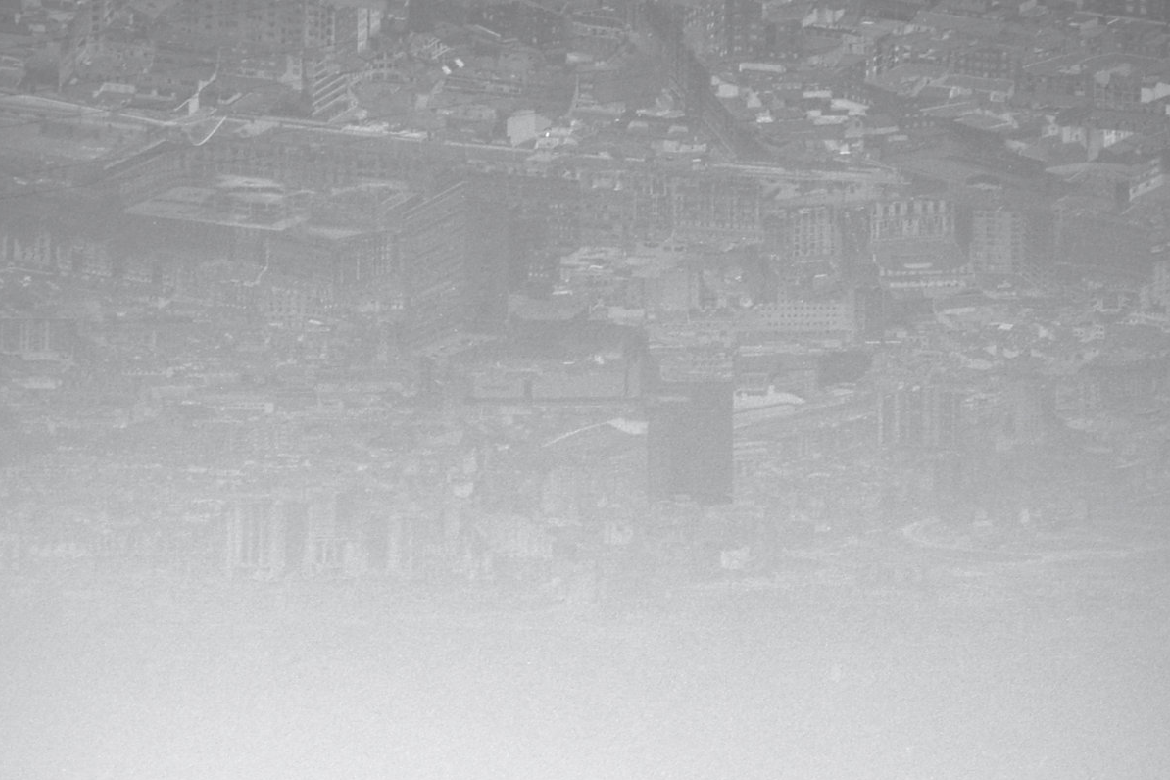“Greyscale terror.“
Ambient artists dabble with many sound sources, yet typically become known for a singular approach. Tim Hecker subverts this, refusing to become comfortable with or renowned for just one practice. His earlier drone albums, such as Harmony in Ultraviolet, hide their samples beneath layers of distortion, and are all about exploring the critical point between drone and noise. More recently, his records have begun life as studio session with an interesting sound source. The results are collaged with complimentary synths and drones to form dense soundscapes. Hecker has explored traditional Japanese instrumentation (Konoyo/Anoyo), choirs (Love Streams), and pipe organs (Ravedeath, 1972), and this unique approach has made Hecker a must-follow member of the experimental ambient community. For this year’s No Highs, the sound sources have changed once again, but the results are undeniably ‘Hecker.’
Good sound collaging evokes the same feeling as admiring a wild garden – nobody has posed it, but everything still lines up just right. Like all music, progression and pacing also play a part to effective collaging, as the artist can’t use a typical song structure, else it may feel uncanny. Instead, the listener should be the one to determine when motifs begin to exist, move into focus, build up, and fall away. Even the most engrossing sounds might overstay their welcome, or flicker into being only briefly, preserving the improvisational qualities of the original source. On No Highs, these sources are diverse, with the defining sound being the synthesiser in its many forms.
Much of No Highs’ runtime is spent on three tracks: “Monotony”, “Anxiety”, and lead single “Lotus Light”, which clock in at eight minutes each. They are all similarly underwritten by a simple rhythmic synthesiser that repeats a short phrase, with additional soundscape elements joining these pulsations: more synthesisers and strings; drones and distortions; rumbling brass and bass. These tracks burgeon with urgency and anxiety, defining the mood of No Highs.
Unfortunately, I don’t think the underlying sequenced synths make for particularly compelling musical scaffolding here. They are so pervasive on these long tracks, and as a result, the potential emotional arcs are forced to end where they once began. Compare this to the songwriting approach on Ravedeath, 1972, where no single sample or element had the job of holding together each soundscape. Instead, the various samples jostled for space, transferring your attention like a kaleidoscope. No Highs is more like flickering torchlight: stress inducing, stark, and never illuminating far beyond your expectations. These eight-minute tracks do have some charms, such as the pleasant outro in “Lotus Light” that recontextualises sounds from its more fearsome moments, and “Anxiety” that fully leans into modular electronic soundscaping. Still, there is a sense that Hecker is a musician who could be doing much more than leaving an arpeggio running whilst crossfading other sounds.
The shorter tracks are typically quieter and smoothly shape-shift into one another, and I found them more compelling than the long tracks. Synthesisers on “Glissalia” hark back to Hecker’s messy organ experiments, while “Winter Cop” is a song for pretending you’re Ryan Gosling in a moody film, gazing out of fogged windows toward neon signs. Colin Stetson contributes saxophone on a few tracks, particularly on “Monotony II” and “Total Garbage”, where his flutterings become the main focus. Stetson‘s saxophone performances are recorded with lovely percussive clicks and clacks, adding to the texture of the music. Elsewhere on the record, you’ll hear more of his performances wandering the city fog.
The record compels me more in its second half, with the trio of “In your Mind”, “Monotony II”, and “Pulse Depression” being my favourite stretch. “In Your Mind” and “Pulse Depression” are like shorter versions of the longer sequencer-backed tracks, and don’t overburden themselves with too many textures. The album’s quiet conclusion comes in the form of “Sense Suppression” and “Living Spa Water”, on which a plucked instrument, likely guitar, is sampled, playing both forward and reversed. Subtle sirens and gurgling synths writhe in the track’s mid section, achieving a mood that is both revelatory and tragic. As the track ends and the record closes, it’s like the fog has curdled, and what was really gesturing at you from the mist is more unusual than you anticipated.
Part of what makes No Highs a tough sell is its focus on discomfort. Hecker has refused the allure of straightforward ambient cosiness, and has conjured a mood of greyscale terror. Traditionally “dark” ambient music isn’t nearly as unnerving as this. Rays of hope glimmer at times, but this album is more about introducing claustrophobia to cloud-watchers.
I personally didn’t connect with several of the aforementioned sequencer tracks, as I felt this sonic idea did not lead to interesting places. Thus, much of No Highs’ sound collaging fell short of the quality I had hoped for. I think this is quite a personal response, and I expect most of Hecker’s fans will find these moments much more satisfying.
7/10
No Highs releases on the 7th April via Kranky Records, and can be pre-ordered through several retailers here.

